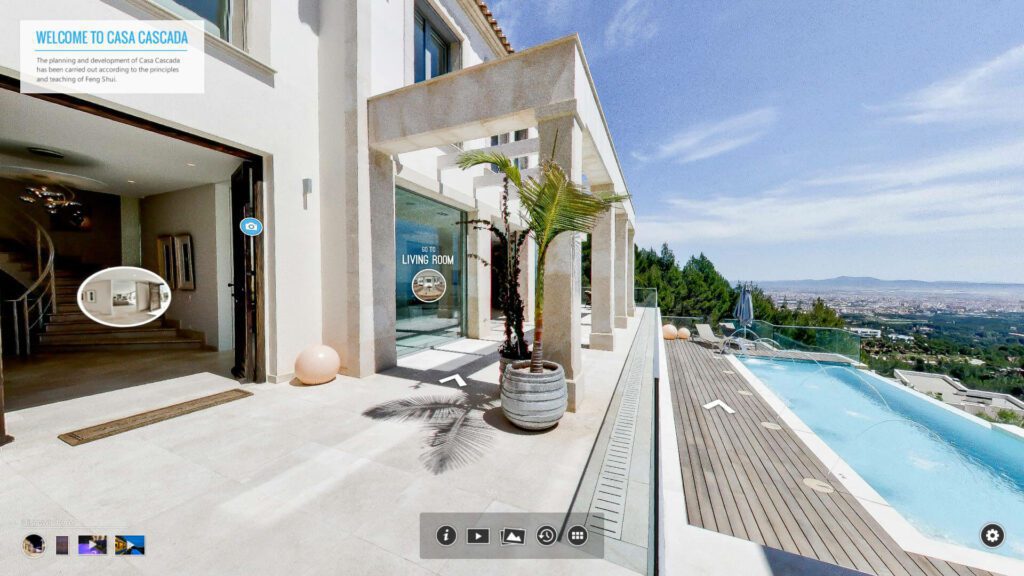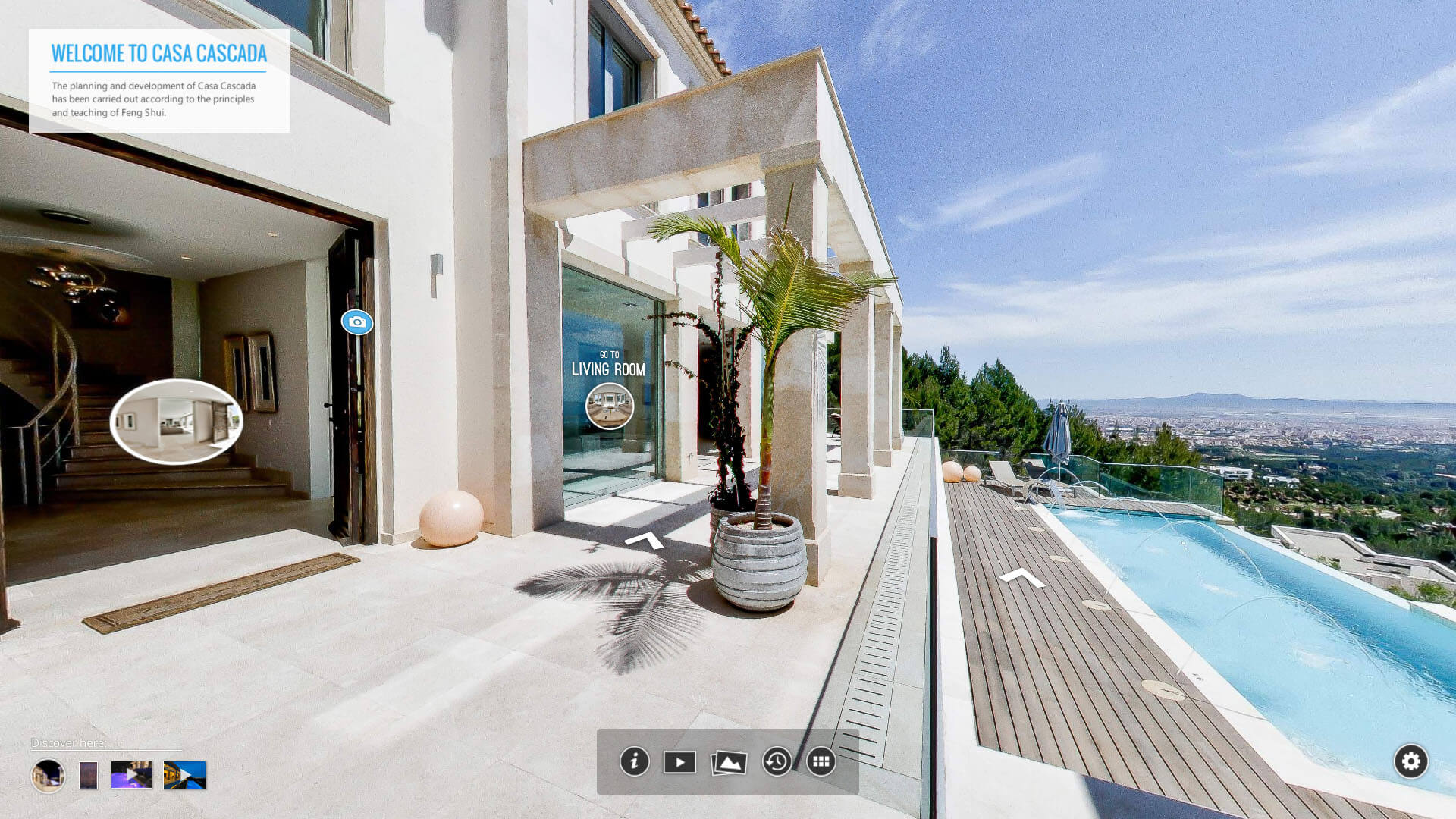The real estate industry has always been driven by the ability to showcase properties in the most compelling way possible. Traditional methods, such as open houses and in-person viewings, have long been the cornerstone of property sales. However, the landscape is rapidly changing, thanks to the advent of virtual tours—a technology that is not only transforming the way properties are marketed but also redefining the entire property viewing experience.


What Are Virtual Tours?
Virtual tours are immersive, 360-degree panoramic views of a property, created using a combination of high-resolution photography, 3D modeling, and sometimes video footage. These tours allow potential buyers or renters to explore every nook and cranny of a property from the comfort of their devices, whether it’s a smartphone, tablet, or desktop computer. Unlike static images or video walkthroughs, virtual tours offer an interactive experience where users can navigate through different rooms, zoom in on details, and get a real sense of the space.
The Rise of Virtual Tours in Real Estate
The use of virtual tours in real estate is not entirely new, but it has seen explosive growth in recent years, particularly in the wake of the COVID-19 pandemic. With social distancing measures and travel restrictions in place, real estate agents and property developers were forced to find alternative ways to showcase properties. Virtual tours quickly emerged as the go-to solution, allowing potential buyers to view properties safely and conveniently.
Even as the world moves toward a post-pandemic era, the popularity of virtual tours continues to rise. This is not just a temporary trend; it’s a significant shift in how properties are marketed and viewed. Buyers and renters have grown accustomed to the convenience and depth of experience that virtual tours offer, and many now expect this feature as part of the property viewing process.
Benefits of Virtual Tours in Real Estate
Virtual tours offer a host of benefits for both real estate professionals and potential buyers. Here’s how they are transforming the industry:
- Enhanced Accessibility
- Global Reach: Virtual tours allow real estate agents to reach a global audience. Prospective buyers from across the world can explore properties without having to travel, making it easier for international buyers to make informed decisions.
- 24/7 Availability: Unlike physical viewings, virtual tours are available around the clock. This means that buyers can explore properties at their own pace and on their own schedule, increasing the likelihood of engagement.
- Time and Cost Efficiency
- Reduced Need for Physical Showings: Virtual tours drastically reduce the number of in-person visits required, saving both the agent’s and buyer’s time. Agents can focus their efforts on serious buyers who have already toured the property virtually.
- Lower Marketing Costs: While creating a virtual tour may require an initial investment, it can significantly reduce the costs associated with staging properties, hosting open houses, and managing numerous in-person visits.
- Increased Buyer Confidence
- Detailed Exploration: Virtual tours allow buyers to explore properties in greater detail than they could through photos or videos alone. They can zoom in on specific features, measure dimensions, and even visualize how their furniture might fit in the space.
- Better Decision Making: By providing a more comprehensive view of the property, virtual tours help buyers make more informed decisions, reducing the chances of buyer’s remorse.
- Improved Marketing and Sales
- Competitive Edge: Properties with virtual tours tend to stand out in listings, attracting more views and generating higher levels of interest. This competitive edge can lead to faster sales and potentially higher offers.
- Interactive Experience: The interactive nature of virtual tours engages buyers more effectively than static images, keeping them on the listing longer and increasing the likelihood of conversion.
- Adapting to Modern Buyer Behavior
- Digital Natives: The new generation of homebuyers, particularly Millennials and Gen Z, are digital natives who are accustomed to using technology in their decision-making processes. Virtual tours cater to their preferences for convenience and digital engagement.
- Post-Pandemic Preferences: The pandemic has accelerated the shift toward online property viewing. Even as in-person visits become more feasible, many buyers still prefer the initial convenience of a virtual tour.
The Future of Virtual Tours in Real Estate
As technology continues to advance, the capabilities of virtual tours are expected to expand even further. Here are some trends that are likely to shape the future of virtual tours in real estate:
- Integration with Virtual Reality (VR)
- Immersive Experiences: The integration of virtual tours with VR technology is already underway. This will allow buyers to experience properties in a fully immersive, 3D environment, as if they were physically walking through the space.
- Remote Collaboration: VR tours can also enable remote collaboration, where multiple stakeholders (e.g., buyers, agents, and architects) can explore a property together in real-time, even if they are in different locations.
- Augmented Reality (AR) Enhancements
- Interactive Features: AR can be used to overlay additional information onto a virtual tour, such as property details, pricing, and renovation options. Buyers can interact with these elements to get a more customized viewing experience.
- Virtual Staging: AR can also enhance virtual staging, allowing buyers to see how different furniture, decor, or renovations might look in the space.
- AI-Driven Personalization
- Customized Tours: Artificial Intelligence (AI) can analyze buyer preferences and behavior to create personalized virtual tours. For example, if a buyer is particularly interested in kitchens, the tour can highlight and focus on this area.
- Predictive Insights: AI can also provide predictive insights, such as which properties a buyer is likely to be interested in based on their interactions with previous tours.
- Seamless Integration with Real Estate Platforms
- Unified Experience: As virtual tours become more mainstream, they will be more seamlessly integrated into real estate platforms and apps. Buyers will be able to view, schedule, and even make offers on properties within a single interface.
- Enhanced Data Analytics: Integration with platforms will also allow agents to gather detailed analytics on how buyers interact with virtual tours, helping them refine their marketing strategies.
Conclusion
Virtual tours are not just a temporary solution to the challenges posed by the pandemic; they are a game-changing innovation that is here to stay. As more real estate professionals adopt this technology, it is set to become an industry standard, offering a more efficient, engaging, and accessible way to view properties. For buyers, virtual tours provide a level of convenience and insight that was previously unimaginable, making the property buying process easier and more informed than ever before.
The future of real estate is digital, and virtual tours are leading the way. As technology continues to evolve, we can expect virtual tours to become even more immersive, interactive, and indispensable in the property buying journey.


